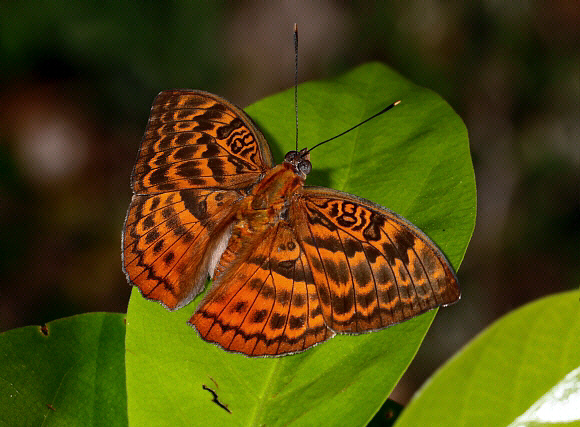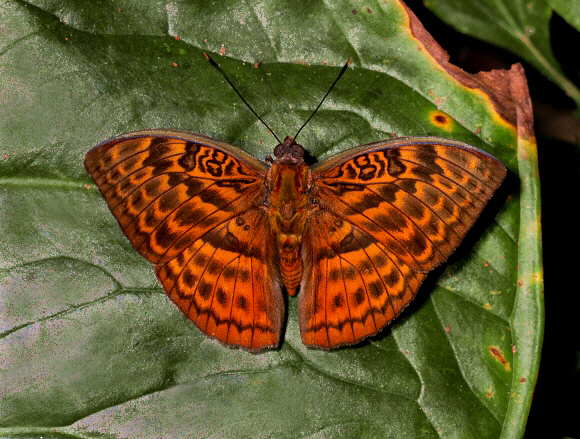
Introduction
There are about 95 Bebearia species, all of which are wholly Afrotropical in distribution.
The fritillary-like pattern of the butterfly illustrated above is typical of many of the smaller Bebearia males, although in most others the ground colour is darker and duller than in oxione. The female is larger than the male, and different in appearance, having a brown and cream Catuna-like pattern.
The undersides of nearly all Bebearia species are cryptically patterned. In the case of oxione, the underside of the male is light tan, while the female is paler and more ochreous. In both cases there is a well-defined dark brown line running from the apex of the forewing to halfway along the inner margin of the hindwing. When the butterflies are at rest on the forest floor with their wings closed, the overall impression is of a dead dry leaf.
Bebearia oxione is distributed from Sierra Leone to Congo, Zaire, and western Uganda.
Habitats
This species is found in good quality forest, where it can be attracted to fruit bait.
Lifecycle
The larval foodplant is Maranthochloa (Marantaceae).
Adult behaviour
Males spend a lot of time in the canopy but sometimes descend to bask on foliage of lower branches or on bushes or saplings along the edges of forest roads. Females are secretive, but can be found along the narrower tracks and paths. They are easily overlooked due to their dark colouration and their similarity to Catuna, and to females of other Bebearia species.

